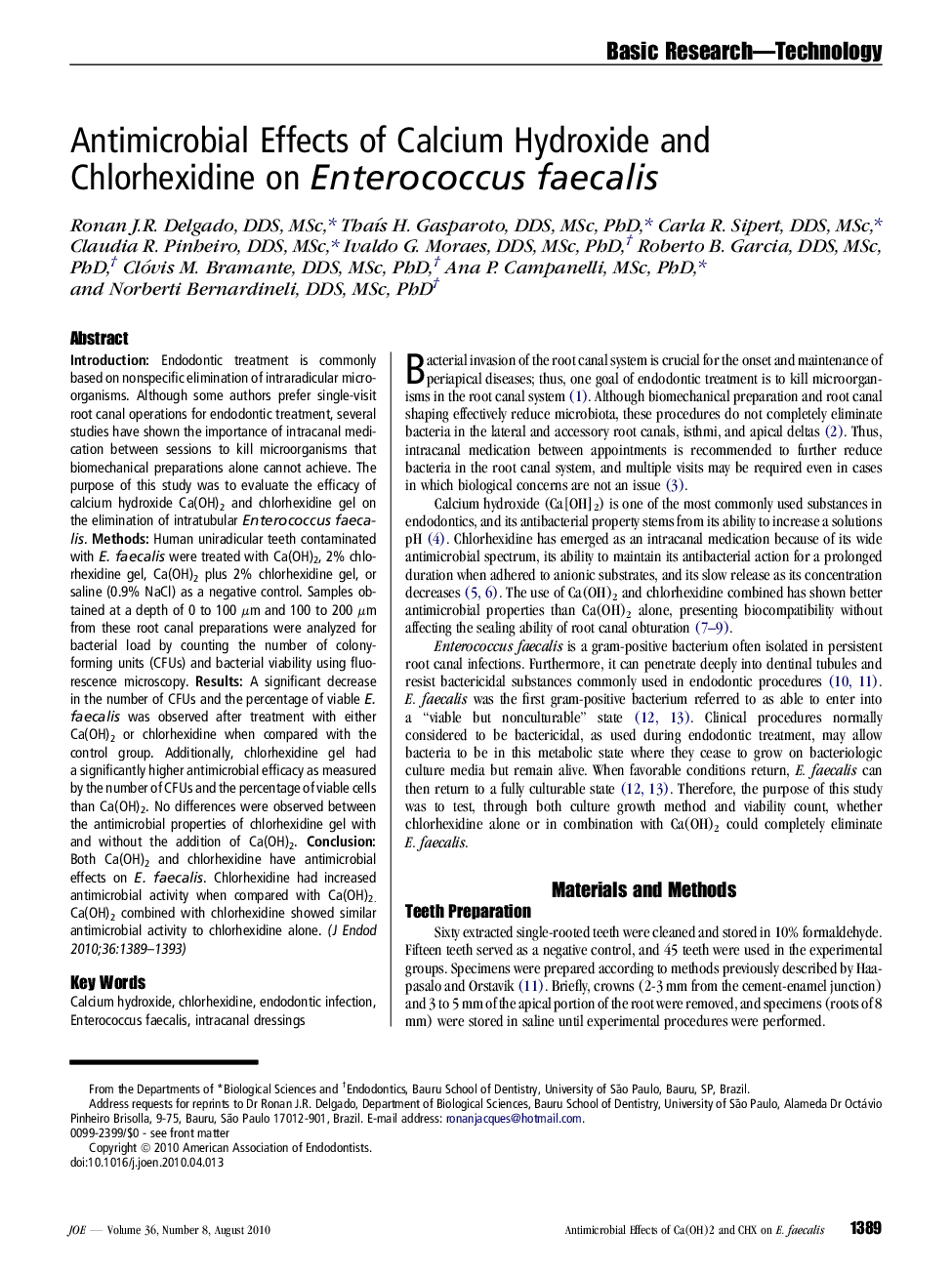| Article ID | Journal | Published Year | Pages | File Type |
|---|---|---|---|---|
| 3150566 | Journal of Endodontics | 2010 | 5 Pages |
IntroductionEndodontic treatment is commonly based on nonspecific elimination of intraradicular microorganisms. Although some authors prefer single-visit root canal operations for endodontic treatment, several studies have shown the importance of intracanal medication between sessions to kill microorganisms that biomechanical preparations alone cannot achieve. The purpose of this study was to evaluate the efficacy of calcium hydroxide Ca(OH)2 and chlorhexidine gel on the elimination of intratubular Enterococcus faecalis.MethodsHuman uniradicular teeth contaminated with E. faecalis were treated with Ca(OH)2, 2% chlorhexidine gel, Ca(OH)2 plus 2% chlorhexidine gel, or saline (0.9% NaCl) as a negative control. Samples obtained at a depth of 0 to 100 μm and 100 to 200 μm from these root canal preparations were analyzed for bacterial load by counting the number of colony-forming units (CFUs) and bacterial viability using fluorescence microscopy.ResultsA significant decrease in the number of CFUs and the percentage of viable E. faecalis was observed after treatment with either Ca(OH)2 or chlorhexidine when compared with the control group. Additionally, chlorhexidine gel had a significantly higher antimicrobial efficacy as measured by the number of CFUs and the percentage of viable cells than Ca(OH)2. No differences were observed between the antimicrobial properties of chlorhexidine gel with and without the addition of Ca(OH)2.ConclusionBoth Ca(OH)2 and chlorhexidine have antimicrobial effects on E. faecalis. Chlorhexidine had increased antimicrobial activity when compared with Ca(OH)2. Ca(OH)2 combined with chlorhexidine showed similar antimicrobial activity to chlorhexidine alone.
